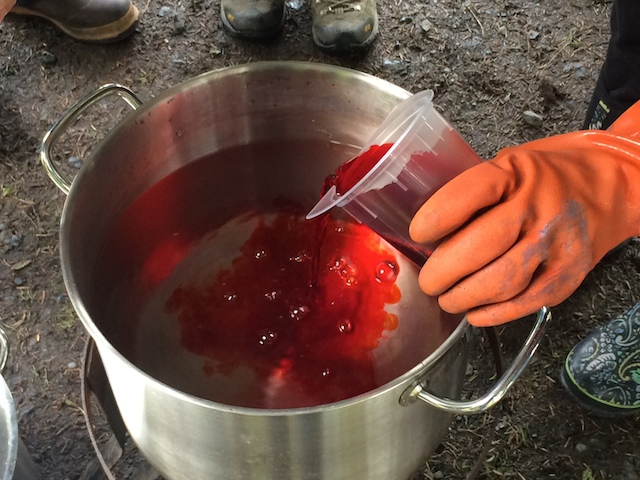Each week, we are emailed with questions from our natural dye community asking simple and complex questions that we thought might be worth sharing. Here are a handful from this week answered by natural dyer in chief, Kathy Hattori, Founder of Botanical Colors:
I really want to get a deep red what should I use?
- These instructions are for wool or silk. This color is trickier to achieve on cotton or linen. If available, use filtered, distilled or reverse osmosis water for the dye bath.
- Scour fibers well and mordant at 20% aluminum sulfate and let the fibers soak in that bath overnight. Remove and extract excess water.
- Make a dye bath with 8% madder extract and 1% calcium carbonate
- Immerse fibers in this dye bath and slowly bring up to temperature. Everything will look rather orange, but don’t panic. The color will develop. Rotate continually and carefully to avoid felting wool.
- The color should develop to a deep red, bordering on Burgundy. Remove, let cool, rinse and dry.
- For rich reds with an orange base, omit the calcium carbonate in the dye bath.
How can I get a different red?
Madder and cochineal are the 2 historic reds that react differently when mixed with a mild acid such as cream of tartar. Madder loses its red shade and shifts to orange, and cochineal moves from a magenta shade to a bright red or pink. When using madder or cochineal, the depth of the red shade depends on 2 things: the tinctorial strength of the dye stuff, and shifting the shade with a small amount of acid. Cochineal will shift from a purple-magenta to a red or sometimes even orange shade. Madder will shift from a deep burgundy shade to orange. So the artful use of Cream of Tartar will create a different shade. Try about 1-3% on the weight of the fiber, or 1 teaspoon per pound of goods.
Cream of Tartar, also known as potassium bitartrate, is produced by fermenting grape juice. It is used to acidify the dye bath to effect a color change, and in mordanting to soften wool fibers. It will shift the color of cochineal, madder and lac from their fuchsia and burgundy red shades to a brighter, redder color.
I’ve used cochineal before but would love to play around with another “red”-what would you suggest?
Lac is another insect dye that produces pink and red. Use 10 to 15% for darker shades and be sure to combine the dye with citric acid when dissolving and let the mixture settle prior to adding to the dye pot. Lac contains a lot of sediment which can cause uneven dye results.

